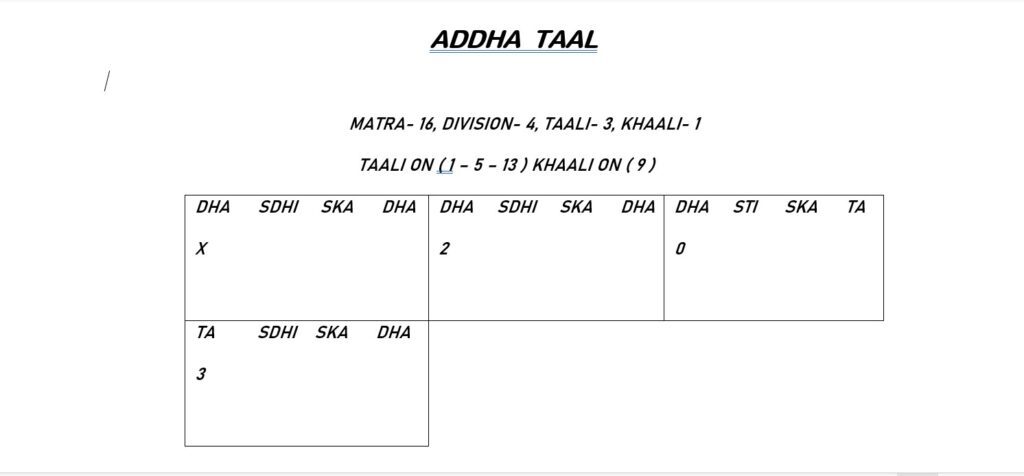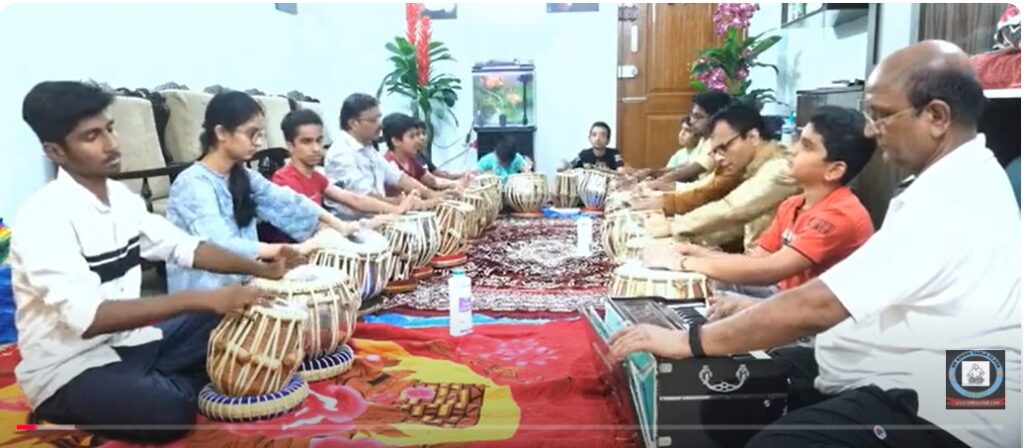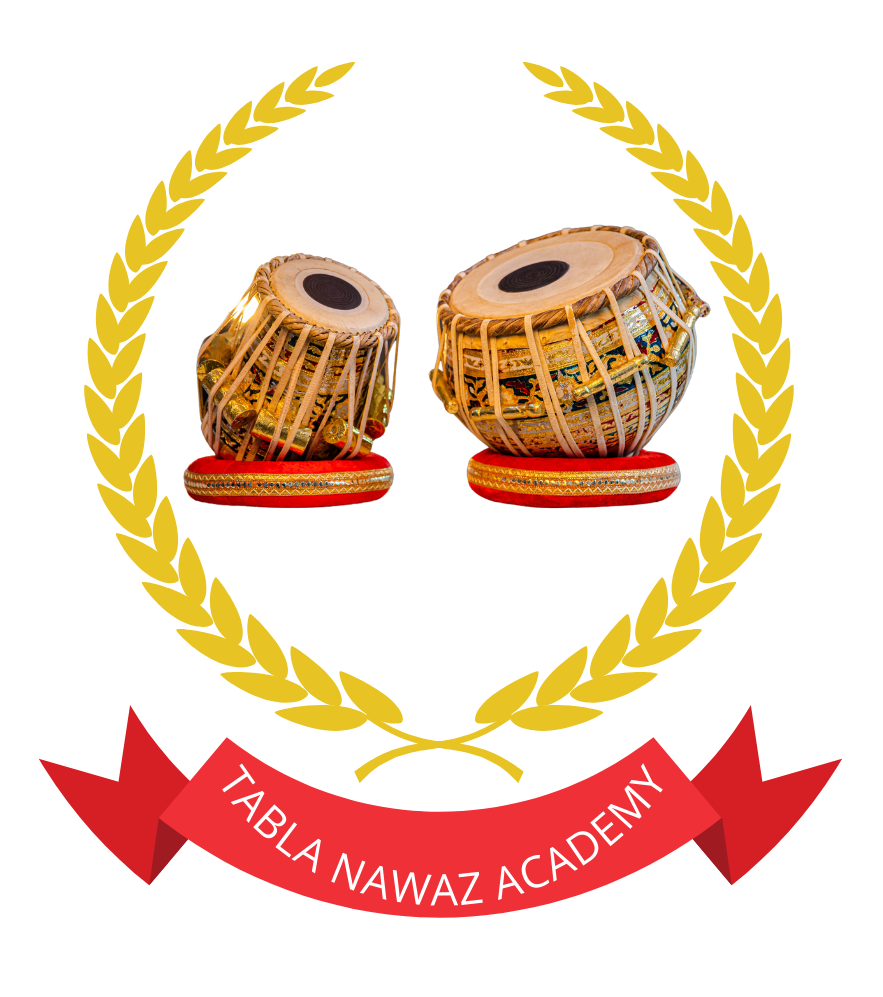Addha Taal in Tabla: Structure, Beats & Playing Guide (16 Matras), Tabla, one of the most versatile percussion instruments in Indian music, is known for its intricate rhythms and vast repertoire of taals (rhythmic cycles). Among these, Addha Taal stands out as a fascinating 16-beat rhythmic cycle used in semi-classical, folk, and even contemporary fusion music. This taal is known for its swinging feel, making it a favorite in thumri, dadra, and light classical compositions. In this blog, we’ll explore the structure, beats, taali-khaali arrangement, and playing techniques of Addha Taal, along with examples of its use in popular music.
What is Addha Taal?
Addha Taal is a 16-matra taal, meaning it consists of 16 beats divided into 4 vibhags (sections). While it shares the same beat count as Teentaal (16 beats), Addha Taal has a distinct, swinging groove that gives it a unique character.
Structure of Addha Taal:
- Matras (Beats): 16
- Vibhags (Divisions): 4
- Taali (Claps): 3 (on beats 1, 5, and 13)
- Khaali (Wave): 1 (on beat 9)
Theka (Basic Beat Pattern)
The traditional theka (rhythmic phrase) of Addha Taal is:

🔹 Dha Dhin Dha Ge | Na Tin Na Ke | Dha Dhin Dha Ge | Na Tin Na Ke
🔹 Dha Ti Dha Ti | Na Ti Na Ti | Dha Ti Dha Ti | Na Ti Na Ti
This groove creates a rolling, lilting effect, making it ideal for semi-classical music and folk compositions.
How to Play Addha Taal on Tabla?
Playing Addha Taal requires a balance between strength and fluidity. Here’s how you can break it down:
- Right Hand (Dayan – Smaller Drum):
- Use Na, Tin, Dhin, Ge to create crisp, clear strokes.
- Maintain a steady tempo and emphasize the swinging groove of the taal.
- Left Hand (Bayan – Bigger Drum):
- The Dha and Ge strokes give depth and bass resonance.
- Use subtle variations to enhance the dynamic flow.
- Taali-Khaali Dynamics:
- The claps on beats 1, 5, and 13 give structure.
- The Khaali (wave) on beat 9 adds contrast and rhythm variation.
Pro Tip: Practice at a slow speed first, focusing on the groove before increasing tempo.
Famous Songs & Performances Featuring Addha Taal
Addha Taal is frequently used in thumri, ghazal, and folk music, and even in modern fusion. Here are a few notable examples:
🎵 “Rangi Saari” – Kavita Seth & Kanishk Seth (A contemporary song with Addha Taal elements)
🎵 “Babul Mora Naihar Chhooto Hi Jaye” – Ustad Bade Ghulam Ali Khan (A classic thumri in Addha Taal)
🎵 “Aaj Jaane Ki Zid Na Karo” – Farida Khanum (A famous ghazal with a slow Addha Taal groove)
These compositions highlight the graceful yet structured nature of Addha Taal.
Addha Taal vs. Teentaal: What’s the Difference?
Though both Addha Taal and Teentaal have 16 beats, their feel and application differ:
| Feature | Addha Taal | Teentaal |
|---|---|---|
| Matras | 16 | 16 |
| Swinging Feel | Yes | No |
| Common in | Thumri, Dadra, Ghazal | Classical Music |
| Taali-Khaali Pattern | 1, 5, 13 (Taali), 9 (Khaali) | 1, 5, 9 (Taali), 13 (Khaali) |
Understanding this distinction is crucial for musicians transitioning between the two taals.
Cultural Significance & Modern Use
Addha Taal has transcended traditional boundaries and is now used in Bollywood, Sufi music, and fusion genres. Many tabla maestros, like Ustad Zakir Hussain and Pt. Anindo Chatterjee, have showcased this taal in innovative ways.
With the rise of global interest in Indian rhythms, Addha Taal is also finding its way into jazz, world music, and experimental compositions.
Conclusion: Why Learn Addha Taal?
If you are a tabla student or enthusiast, mastering Addha Taal can:
✅ Improve your rhythm skills
✅ Expand your repertoire beyond classical taals
✅ Help you play semi-classical and fusion music
https://www.youtube.com/@BhagawanSingh
https://www.linkedin.com/in/shree-singh-bb483059


